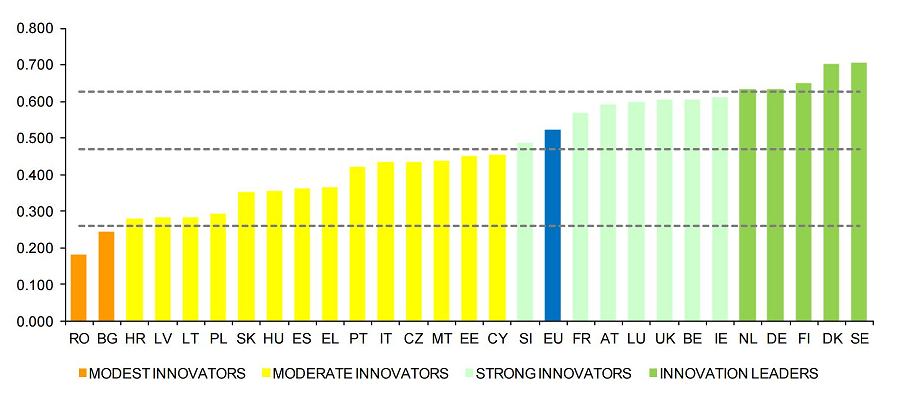The European Commission has published the European Innovation Scoreboard 2016 (previously called the Innovation Union Scoreboard) on 14 July.
The European Innovation Scoreboard is a comparative analysis of innovation performance in EU Member States which helps countries to identify areas of weakness.
The average performance score is a composite indicator building on 25 indicators including:
The four performance groups are based on a comparison with the EU28 average (figure):

Figure: EU Member States’ innovation performance (source: report summary)
At EU level, Sweden is still the EU innovation leader (although non-EU member Switzerland performs even better), followed by Denmark, Finland, Germany and the Netherlands. The fastest growing innovators are Latvia (which moved up from modest to moderate innovator), the Netherlands (which moved up from strong innovator to innovation leader), but also Malta, Lithuania and the UK. After a growth period of eight years, 17 out of 28 Member States now show a decline compared to last year.
At a global level, the EU continues to be less innovative than South Korea, the United States and Japan. The EU still has a considerable lead over China, although China is closing the gap at a much higher growth rate than the EU. The report explains that European innovation is still held back by low business investment and restrictive framework conditions, notably affecting SMEs.
The 2016 report includes for the first time a forward-looking analysis. In two years' time, overall EU innovation performance is expected to increase by about 2.5%. Elżbieta Bieńkowska, Commissioner for Internal Market, Industry, Entrepreneurship and SMEs, explained to Euractiv that the EU is working on reforms which could have a positive impact on innovation across Europe, such as VAT regulation, insolvency regulation, more easily accessible information, and a clear and SME-friendly intellectual property framework.
For more information download the full report